What's New
Displaying results 3611 - 3620 of 4052
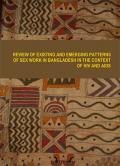
Resource | Reviews and Snapshots,
This study was commissioned by UNAIDS to review the existing and emerging patterns of sex work in Bangladesh in the context of the HIV epidemic. It was a rapid ethnographic snapshot; validating some of the secondary data with perspectives from the ground level informants including gatekeepers from the government, research organizations, civil society and the communities. The study used key informant interviews and focus group discussions as its method. The field study was for 5 days and the study was completed over one month’s time.
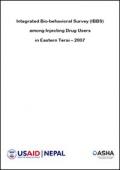
Resource | Publications,
The National Center for AIDS and STD Control (NCASC), Nepal has developed a comprehensive National Surveillance Plan for HIV and AIDS which includes Integrated Biological and Behavioral Surveys (IBBS) to be conducted at regular intervals among most at risk populations (MARPs).
This report details the findings of the third round of IBBS conducted among 345 male IDUs in the Eastern Terai. The primary objective of the study was to collect strategic information to analyze trends in risk behavior and HIV and STI knowledge and prevalence among IDUs.
The study was conducted among IDUs in the three districts of Jhapa, Morang and Sunsari in the Eastern Terai. A total of 345 male IDUs were sampled using two stage cluster sampling methodology.
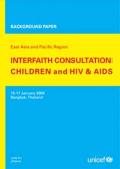
Resource | Publications,
The East Asia and Pacific region has not been spared from the ravages of HIV and AIDS. In 2007 in Asia there were an estimated 4.9 million people living with HIV (PLHIV), including 440,000 people who became newly infected in the past year; approximately 300,000 died from AIDS-related illnesses. Also in the same year, East Asia had an estimated 800,000 adults and children living with HIV, 92,000 adults and children newly infected with HIV, and 32,000 adult and child deaths from AIDS.
In responding to the needs of children affected by HIV & AIDS and other orphans and vulnerable children (OVC), UNICEF is committed to minimizing the further spread of HIV in the region and ensuring that the highest possible level of care, treatment and support is available for those already infected.
Faith-based organizations (FBOs), regardless of religion or denomination, have particular attributes that can strengthen the HIV & AIDS response and contribute more broadly to the protection, care and support of OVCs.
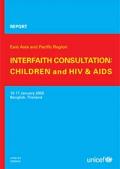
Resource | Publications,
The UNICEF East Asia and Pacific Region Interfaith Consultation: Children and HIV & AIDS, held from 15-17 January 2008 in Bangkok, Thailand, was aimed at developing an interfaith regional framework to strengthen the role of Faith-Based Organizations (FBOs) in responding to HIV & AIDS and in addressing the needs of children affected by HIV and other vulnerable children.
In addition to providing care and support to those infected and affected by HIV & AIDS, many delegates talked about what they saw as room for an even larger role in prevention. They saw scope for expanding activities in such areas as life skills education and outreach programmes targeting most-at-risk adolescents, especially with many of them already working with children’s classes and youth groups.
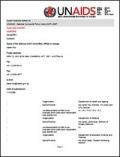
Resource | Publications,
The National Composite Policy Index (NCPI) data submitted by countries was validated for internal consistency and completeness of the response by UNAIDS/Geneva. Illogical values were corrected; countries were contacted in cases of substantial missing data and multiple, non-consolidated NCPI submissions. The PDF files posted contain the validated NCPI data.
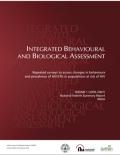
Resource | Publications,
The first round of the Integrated Behavioural and Biological Assessment (IBBA) was implemented in 29 districts in six states, i.e., Andhra Pradesh, Karnataka, Maharashtra, Tamil Nadu, Manipur, and Nagaland. The IBBA was implemented amidst many logistical challenges, including setting up field sites for interviews and medical examinations in areas convenient to high-risk groups, collecting biological specimens in sometimes remote field locations, and transporting specimens to district and state laboratories under cold-chain conditions. This report summarizes the major findings of the first round of the IBBA among FSWs, MSM, Clients, and IDUs.
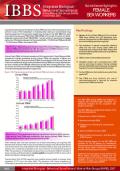
Resource | Fact Sheets,
Unprotected sex between female sex workers (FSW) and their clients is the second most common route of HIV transmission in Indonesia after sharing of contaminated drug injecting equipment. This summary presents key findings of the 2007 IBBS from eight provinces for two groups of FSW: Direct FSWs (DFSW), who consist of brothel- and street-based sex workers, and Indirect FSWs (IFSW) – women working in karaoke bars, massage parlors, etc. Official estimates are that there were 95,000 - 157,000 Direct FSWs and 85,000 - 107,000 Indirect FSWs in Indonesia in 2006.
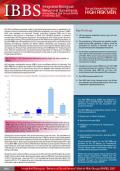
Resource | Fact Sheets,
For HIV surveillance purposes, males in occupational groups known or suspected to be frequent clients of female sex workers (FSW) are considered to be “high-risk men”(HRM). Such men represent an important “bridge” population between FSW, one of the population sub-groups in Indonesia in which the HIV/AIDS epidemic is currently concentrated, and the general population. Surveillance of such bridge groups serves to provide early warning of the potential spread of HIV/AIDS into the general population. In the 2007 IBBS, men were selected from four occupational categories:
- truck drivers (in Deli Serdang and Batang),
- seafarers (in Batam, Medan, Semarang, and Surabaya),
- dock workers (in Jakarta, Merauke, and Sorong),
- and moto-taxi drivers (in Medan, Banyuwangi, and Jayapura).
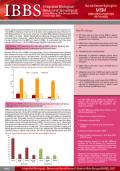
Resource | Fact Sheets,
Recent regional analyses indicate that unprotected sex among men who have sex with men (MSM) is making an important and at least in some cases growing contribution to HIV/AIDS epidemics in many Asian countries. The 2007 IBBS collected behavioral data from MSM in six cities – Medan, Batam, Jakarta, Bandung, Surabaya and Malang, and biological data in three cities – Jakarta, Bandung and Surabaya. This summary presents the key findings from the IBBS with regard to MSM.
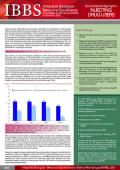
Resource | Fact Sheets,
Injecting drug users (IDU) are particularly vulnerable to the transmission of HIV because sharing contaminated drug injecting equipment transmits the HIV virus more efficiently than any other mode of transmission. Since initial data indicating 19% prevalence among IDU in 1999, HIV prevalence has been consistently rising in this population sub-group and represents the highest prevalence of HIV among identifiable population sub-groups in Indonesia. This summary presents key findings of the IBBS 2007 from two (2) cities from which only behavioral survey data were gathered (Semarang and Malang) and four (4) cities from which both biological and behavioral data were gathered (Medan, Jakarta, Bandung, and Surabaya).





